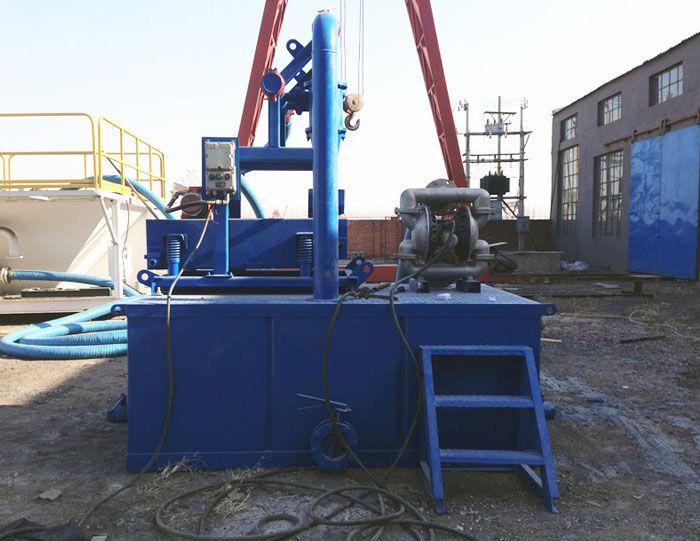The active mud system is a system of tanks, lines, pumps, and valves to facilitate circulation of mud around the well and through the solids control equipment. The solids control equipment is described in the following section.
The active system tanks have some means of allowing mud into the mud tank and also have a route out of the tank. As discussed earlier, drilling mud usually consists of a liquid (water or oil, or both) within which are suspended solids such as clays (for viscosity) and barite (for density control). (Barite is a naturally occurring mineral, BaSO4, of high specific gravity that is used as an additive in drilling fluids and cements to increase density.)

Other solids materials will enter the mud from the well as drilling progresses. If the mud is allowed to stand in the tanks with little or no movement, solids will start to settle on the bottom of the tank. To
avoid this, mud tanks are equipped with agitators. An agitator is simply a large paddle attached to an electric motor.
As the motor turns the mud agitator, the mud is continually moved, and this reduces the tendency for solids to settle on the bottom. Usually the corners of a square or rectangular tank will still be relatively static, even with agitators in the tank, and solids will often settle out here.
Settling of solids in the bottom of tanks is detrimental. It reduces the effective volume of the tank. Solids settling will also reduce the density of the mud, and this will require treatment of the mud to restore the density. Settled solids can also plug pipes and valves in the bottom of the tank. At some point, the tank has to be emptied, and the sludge on the bottom dug out. It is better if agitation is suffi ciently vigorous to reduce settling as much as possible.
It is crucial that the driller knows how much mud is in the active system and in particular is able to identify when the total volume increases or decreases. An increase in mud volume may indicate that fluid is entering the wellbore from a downhole formation (a kick); a decrease may mean that mud is being lost downhole. In either case, action must be taken. Each tank in the active system (as opposed to reserve tanks containing mud) must have a means of accurately measuring the volume in that tank in such a way that the driller can be alerted to any change in volume.
There are two common systems in use:
A float is attached to some kind of system that measures its position relative to the bottom of the tank. As the tank dimensions are known, the volume can be calculated from the height from the bottom of the tank to the float (figure 1.).
An ultrasonic detector is positioned above the tank. A sound signal is generated, and the time for the signal to bounce off the mud surface and return to the detector is measured. Knowing the speed of sound in air, the distance from a known point (the sound generator) to the detector via the mud surface can be calculated, and this can be converted to a volume for that particular tank.
The driller has an instrument, called the pit volume totalizer, that can display the volume in any particular tank and can also add up all of the surface active volumes so that any change in the total surface volume may be detected. The PVT also includes alarms that can be set so that changes beyond a set amount lost or gained will cause an alarm to sound.
 Linear Motion Shale Shaker In Drilling Rig
Linear Motion Shale Shaker In Drilling Rig  Oilfield Mud Cleaner
Oilfield Mud Cleaner  Drilling Fluid Decanter Centrifuge
Drilling Fluid Decanter Centrifuge  Drilling Mud Desander
Drilling Mud Desander  Hydrocyclone Desilter
Hydrocyclone Desilter  Centrifugal Pump/Centrifugal Mud Pump
Centrifugal Pump/Centrifugal Mud Pump  Shear Pump
Shear Pump  Jet Mud Mixer
Jet Mud Mixer  Horizontal Mud Agitator
Horizontal Mud Agitator  Constant Pressure Drilling Fluid Mud Gas Separator
Constant Pressure Drilling Fluid Mud Gas Separator  Mud Gun
Mud Gun  Mud Tank
Mud Tank  Solids Control System Vacuum Degasser
Solids Control System Vacuum Degasser  Flare Ignition Device
Flare Ignition Device  Diesel Tank
Diesel Tank  Submersible Slurry Pump
Submersible Slurry Pump 






































